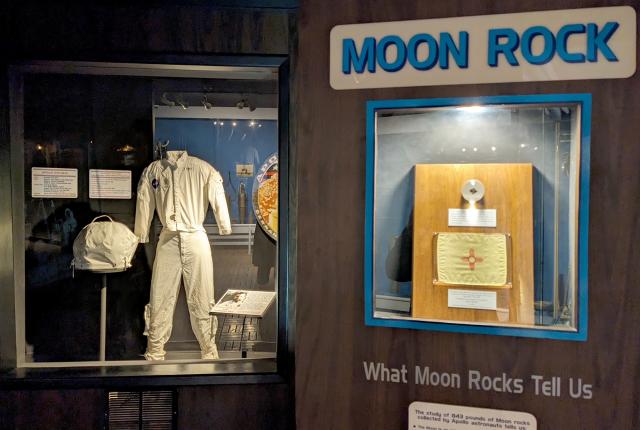A SMALL HUNK OF ROCK from the moon’s Taurus–Littrow Valley sits on display at the Roswell Museum as a tribute to Robert H. Goddard’s early work in rocket propulsion. A New England native, Goddard launched the world’s first liquid-fuel rocket from an Auburn, Massachusetts, farm on March 16, 1926. The 2.5-second flight blasted 41 feet into the air before landing in a nearby cabbage field. After relocating to Roswell in 1930, Goddard and a team of researchers continued experiments that ultimately led to 214 patents. “He and his wife, Esther, were very much a part of the Roswell community,” says Roswell Museum executive director Caroline Brooks. Although Goddard died in 1945 before his work was truly realized, Esther labored to ensure his legacy. She cut the ribbon at the Roswell Museum ceremony commemorating the 49th anniversary of that first launch, and Apollo 17 astronaut and geologist Harrison Schmitt presented one of the moon rocks he brought home to the governor and museum. Esther also helped establish the museum’s Goddard exhibition, where the moon rock resides alongside a piece of the New Mexico flag that was aboard the Apollo 17 capsule.
Read more: Ham the Astrochimp's Project Mercury mission paved the way for human spaceflight.
The Roswell Museum, open daily from 10 a.m. to 6 p.m., except on federal holidays, is located at 1011 N. Richardson Ave.


